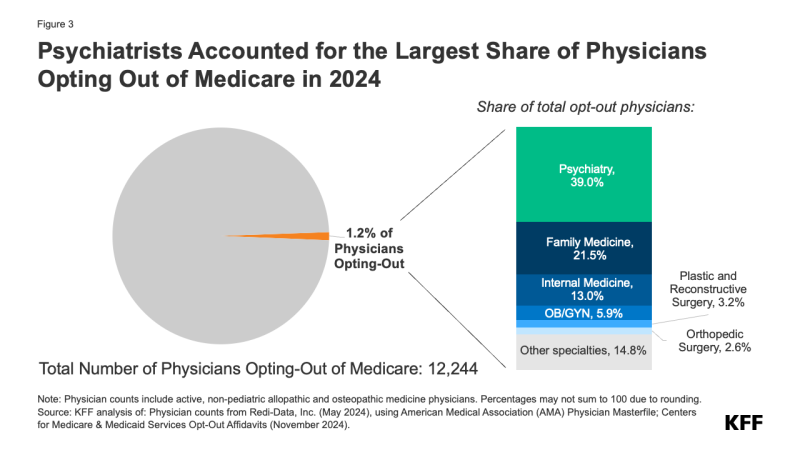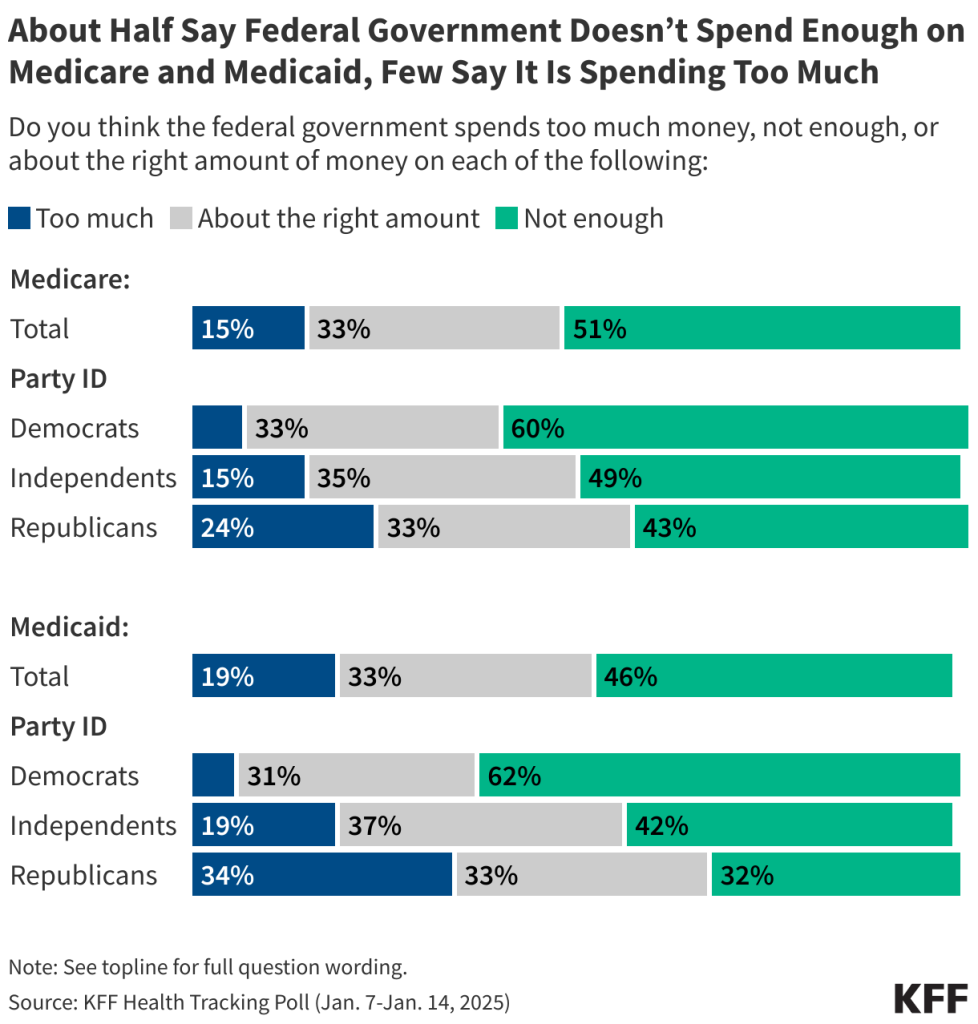This factsheet has been updated to reflect the Trump Administration’s Executive Order on Withdrawing the United States from the World Health Organization, issued on January 20, 2025.
Key Facts
- The World Health Organization (WHO), founded in 1948, is a specialized agency of the United Nations with a broad mandate to act as a coordinating authority on international health issues, including helping countries mount responses to public health emergencies.
- The U.S. government (U.S.) has been actively engaged with WHO throughout its history, providing financial and technical support as well as participating in its governance structure. However, on January 20, 2025, President Trump announced the U.S. would withdraw as a member of WHO and halt funding to the organization. In 2020, during the first Trump administration, the U.S. temporarily suspended funding and initiated a process to end membership, actions that were reversed by the Biden administration in 2021.
- Historically, the U.S. has historically been one of the largest funders of WHO. U.S. contributions have ranged between $163 million and $816 million annually over the last decade.
- Over the last several years WHO has overseen negotiation processes to update an existing agreement known as the International Health Regulations (IHR), and to establish a potential new “pandemic agreement”. In May 2024, member states approved a set of revisions to the IHR but decided to extend the negotiation timeline for a pandemic agreement into 2025. By executive order from President Trump the U.S. will no longer participate in pandemic agreement negotiations, and its future is uncertain.
- In 2024, WHO launched its first ever “investment round,” seeking to mobilize an additional $7 billion from existing and new donors to support its operations through 2028. As of the end of 2024, the organization reported it received $3.8 billion in additional donor pledges, amounting to 53% of its fundraising goal. The Biden administration did not announce a pledge to WHO at that time and the Trump administration has already said that it will cease funding the organization.
What is the World Health Organization?
WHO, founded in 1948, is a specialized agency of the United Nations. As outlined in its constitution, WHO has a broad mandate to “act as the directing and coordinating authority on international health work” within the United Nations system. It has 194 member states.
The agency has played a key role in a number of past global health achievements, such as the Alma-Ata Declaration on primary health care (1978), the eradication of smallpox (formally recognized in 1980), the Framework Convention on Tobacco Control (adopted in 2003), and the 2005 revision of the International Health Regulations (IHR), an international agreement that outlines roles and responsibilities in preparing for and responding to international health emergencies. WHO has regularly provided member states with technical guidance and support during responses to epidemics and pandemics, such as Ebola, Zika, mpox, and COVID-19.
Mission and Priorities
WHO’s overarching mission is “attainment by all peoples of the highest possible level of health.” It supports its mission through activities such as:
- providing technical assistance to countries;
- setting international health standards and providing guidance on health issues;
- coordinating and supporting international responses to health emergencies such as disease outbreaks; and
- promoting and advocating for better global health.
The organization also serves as a convener and host for international meetings and discussions on health issues. While WHO is generally not a direct funder of health services and programs in countries, it does provide supplies and other support during emergencies and carries out programs funded by donors.
WHO’s overarching objective for its current work period (2019-2025) has been “ensuring healthy lives and promoting well-being for all at all ages.” In pursuit of this objective, it has been focusing on three strategic priorities (the “triple-billion targets”): helping 1 billion more people benefit from universal health coverage; ensuring 1 billion more people are better protected against health emergencies; and helping 1 billion more people enjoy better health and well-being.
As part of its work to help countries be better protected against health emergencies – and propelled by the issues and challenges faced during the COVID-19 pandemic – WHO has been overseeing two sets of international negotiations among member states:
At the May 2024 World Health Assembly (WHA) meeting, member states did reach consensus and approved a set of revisions to the IHR. On the pandemic agreement, member states have not yet reached consensus and decided to continue negotiations into 2025 with a goal of completing negotiations and voting on the agreement at the May 2025 WHA meeting.
Organization
WHO has a global reach, with a headquarters office located in Geneva, Switzerland, six semi-autonomous regional offices that oversee activities in each region,1 and a network of country offices and representatives around the world. It is led by a Director-General (DG), currently Dr. Tedros Adhanom Ghebreyesus, who was first appointed in 2017 and was re-elected to a second five-year term in May 2022. Dr. Tedros has indicated that his priorities include continuing to strengthen WHO’s financing, staffing, and operations; building pandemic preparedness and response capacities at WHO and elsewhere; and helping countries re-orient health systems toward primary health care and universal health coverage.
World Health Assembly
The World Health Assembly (WHA), comprised of representatives from 194 member states, is the supreme decision-making body for WHO and is convened annually. It is responsible for selecting the Director-General, setting priorities, and approving WHO’s budget and activities. The annual WHA meeting in May also serves as a key forum for nations to debate and make decisions about health policy and WHO organizational issues. Every four years, the WHA negotiates and approves a work plan for WHO, known as the general programme of work (GPW). The current GPW, for 2019-2023, has been extended by the WHA through 2025. Every two years the WHA also approves WHO’s programme budget in support of its work plan; the current programme budget covers the 2024-2025 biennium. More information about WHO’s budget provided below.
Executive Board
WHO’s Executive Board, comprised of 34 members technically qualified in the field of health, facilitates the implementation of the agency’s work plan and provides proposals and recommendations to the Director-General and the WHA. The 34 members are drawn from six regions as follows:
- 7 represent Africa,
- 6 represent the Americas,
- 5 represent the Eastern Mediterranean,
- 8 represent Europe,
- 3 represent South-East Asia, and
- 5 represent the Western Pacific.
Member states within each region designate members to serve on the Executive Board on a rotating basis. The U.S. currently holds a seat on the Executive Board.
Activities
WHO supports activities across a number of key areas, organized into several “budget segments,” including “base programmes,” emergency operations, polio eradication, and “special programmes” (see Table 1). “Base programmes” refers to the core support provided for WHO headquarters activities, regional operations, and efforts such as improving access to quality essential health services, essential medicines, vaccines, diagnostics, and devices for primary health care. “Emergency operations” includes WHO efforts to help countries prepare for and respond to epidemics and other health emergencies such as COVID-19, mpox, and natural disasters. “Special programmes” includes a number of WHO-led initiatives such as the Research and Training in Tropical Diseases program and Pandemic Influenza Preparedness (PIP) Framework activities.
Funding
Programme Budget
WHO has a programme budget set in advance by member states, which is meant to outline planned activities to meet its work plan over a two-year period (biennium) and describes the “resource levels required to deliver that work.” The current programme budget of $6.834 billion covers the period 2024-2025, and was approved by member states in May 2023. This amount represents a slight (2%) increase over WHO’s previous 2022-2023 programme budget of $6.726 billion. See Table 1.
The programme budget represents a plan for the organization’s anticipated resources, but actual resources may deviate from the initial budgeted amounts over course of the biennium due to changing or unexpected circumstances, such as additional resources (revenue) provided to WHO for emergency responses or lower levels of support than expected. For example, in the previous biennium (2022-2023) WHO reported programme resources that totaled $8.4 billion due to additional funding in support of emergency operations, including COVID-19 response and polio eradication activities.
Revenue
WHO has two primary sources of revenue:
- assessed contributions (set amounts expected to be paid by member-state governments, scaled by income and population) and
- voluntary contributions (other funds provided by member states, plus contributions from private organizations and individuals).
Most assessed contributions are considered “core” funding, meaning they are flexible funds that are often used to cover general expenses and program activities. Voluntary contributions, on the other hand, are often “specified” funds, meaning they are earmarked by donors for certain activities. Although decades ago the majority of WHO’s revenue came from assessed contributions, more recently voluntary contributions have comprised the larger share of WHO’s budget. For example, in the previous budget period (2022-2023) assessed contributions totaled $956.9 million (12.1% of total revenue), voluntary contributions totaled $6.92 billion (87.5% of total revenue), and “other revenue” totaled $28.1 million (0.4%).2 See Figure 1.

Reliance on voluntary, relatively inflexible funding has, in WHO’s view, hampered its operations and effectiveness. In 2022, member states, including the U.S., agreed in principle to move toward more predictable, flexible funding for WHO and to reduce the role of specified voluntary contributions. Since then, member states have approved a 20% increase in assessed contributions for the 2024-2025 biennium, and instituted a goal to have 50% of WHO’s programme budget be financed through assessed contributions by 2030 (which could be linked to WHO first meeting certain organizational benchmarks). However, following the Trump Administration’s decision to withhold U.S. funding and withdraw from WHO altogether, some countries such as China have expressed opposition to the previously agreed-to increases in member contributions, raising concerns about the extent to which these increases will actually be enacted.
In 2024, member states also approved the launch of WHO’s first-ever “investment round, which aims to mobilize additional funding for WHO over the next four years. In its investment case for 2025-2028, WHO estimates it will need $11 billion to implement its global program of work (GPW) over this period, but member state assessments (core contributions) are likely to amount to $4 billion, leaving a $7 billion gap to fill with voluntary contributions and other donations. To help fill this gap, WHO held a series of meetings and “pledging moments,” culminating in a high-level event around the G20 leaders’ summit in Brazil in November 2024. Through this process, WHO reports it was able to generate an additional $3.8 billion in donor pledges through 2028, or 53% of its original goal of $7 billion. The Biden administration did not announce any additional pledges to WHO through the investment round, and now the Trump administration has said that it will cease funding the organization.
Challenges
WHO faces a number of institutional challenges, including:
- a scope of responsibility that has expanded over time with little growth in core, non-emergency funding;
- an inflexible budget dominated in recent years by less predictable voluntary contributions often earmarked for specific activities;
- a cumbersome, decentralized, and bureaucratic governance structure; and
- a dual mandate of being both a technical agency with health expertise and a political body where states debate and negotiate on sometimes divisive health issues.
These and other challenges were particularly evident during and after perceived failures of the agency in the response to the Ebola epidemic in West Africa (2014-2015), and in the criticisms directed at WHO as it tried to help coordinate a global response to the COVID-19 pandemic. Even as many member states continue to support WHO and recognize its importance for global health, many are also calling for reforms to the organization that would help address its weaknesses. WHO itself supports reforms in several areas and has taken some internal reform actions, while also launching its new “investment round” and ushering negotiation processes to revise the International Health Regulations and establish a new pandemic accord, each of which includes reforms to WHO practices.
U.S. Engagement with WHO
The U.S. government has long been engaged with WHO in multiple ways including through financial support, participation in governance and diplomacy, and joint activities (see below). In 2020, after the onset of the COVID-19 pandemic, the first Trump administration suspended financial support and initiated a process to withdraw the U.S. from membership in the organization.3 Under the Biden administration, U.S. relations with the organization were re-established in January 2021, and U.S. funding to WHO was restored.4 However, on January 20, 2025 President Trump signed an Executive Order in his first day of office to once again suspend U.S. contributions to WHO, withdraw U.S. membership, and recall all U.S. personnel working with the organization. Under the guidelines in the WHO Constitution, the withdrawal of a member state from the organization becomes official after one year after notice is given. The Trump Administration submitted a formal letter of withdrawal, and the United Nations has said U.S. membership in WHO will officially end on January 23, 2026.
Financial Support
One of the main ways in which the U.S. government supports WHO is through its assessed and voluntary contributions (which have now been halted under the new Executive Order from President Trump). The U.S. has historically been the single largest contributor to WHO. In the 2020-2021 period (when the Trump administration withheld some U.S. funding during the COVID-19 pandemic), it was the third largest since other donors, notably Germany and the Bill and Melinda Gates Foundation, increased their contributions in response to COVID-19. The Biden administration restored funding starting in 2021 and in the 2022-2023 period the U.S. was once again the largest contributor to WHO.
For many years, the assessed contribution for the U.S. has been set at 22% of all member state assessed contributions, the maximum allowed rate. Between FY 2015 and FY 2024, the U.S. assessed contribution has been fairly stable, fluctuating between $109 million and $122 million (in FY 2019 and FY 2020 the U.S. actually paid less than its assessed amount, and in FY 2021 it paid more than that amount due to payments made toward outstanding arrears). See Figure 2.
Voluntary contributions for specific projects or activities, on the other hand, have varied to reflect changing U.S. priorities and/or support during international crises. Over the past decade, U.S. voluntary contributions have ranged from a low of $105 million in FY 2020 to a high of $694 million in FY 2022. Higher amounts of voluntary contributions can be reflective of increased U.S. support for specific WHO activities such as emergency response. U.S. voluntary contributions also support a range of other WHO activities such as polio eradication; maternal, newborn, and child health programs; mental health services for victims of torture and trauma; health coordination in COVID-19 response; and other infectious diseases.
WHO reports that U.S. assessed and voluntary contributions together represented 15.6% of WHO’s total revenue in the 2022-2023 biennium, making the U.S. the largest donor to WHO during that period.
Governance Activities
In the past, the U.S. had been an active participant in WHO governance, including through the Executive Board and the World Health Assembly (WHA), though under the new Executive Order from President Trump, all official U.S. participation in WHO has been halted. The U.S. held a seat on the WHO Executive Board when the Executive Order was issued in January 2025.5 The U.S. had historically been an active and engaged member of the WHA, sending a large delegation each year that has typically been led by a representative from the Department of Health and Human Services, with multiple other U.S. agencies and departments also participating. The U.S. was also actively participating in the negotiations to develop a new pandemic agreement and participated in the recent process to update and amend the IHR agreement.
Technical Support
The U.S. had, in the past, provided technical support to WHO through a variety of activities and partnerships. This includes U.S. government experts and resources supporting research and reference laboratory work via WHO collaborating centres6 and participation of U.S. experts on advisory panels and advisory groups convened by WHO. The U.S. contributions to WHO collaborating centres have included technical areas such as cancer, occupational health, nutrition, chronic diseases, and improving health technologies.7 In addition, U.S. government representatives were often seconded to or have served as liaisons at WHO headquarters and WHO regional offices, working day-to-day with staff on technical efforts, though those personnel have been recalled under the new Trump Administration Executive Order.8
Partnering Activities
The U.S. has also worked in partnership with WHO before and during responses to outbreaks and other international health emergencies, including participating in international teams that WHO organizes to investigate and respond to outbreaks around the world. For example, the U.S. worked with WHO and the broader multilateral response to the Ebola epidemic in West Africa that began in 2014, and U.S. scientists were part of the WHO delegation that visited China in February 2020 to assess its response to COVID-19. To help further develop areas of partnership and coordination, the Biden administration had instituted semi-regular “strategic dialogue” meetings to create a regular forum for discussions between key U.S. and WHO officials.






























 Irving Washington
Irving Washington  Hagere Yilma
Hagere Yilma 







